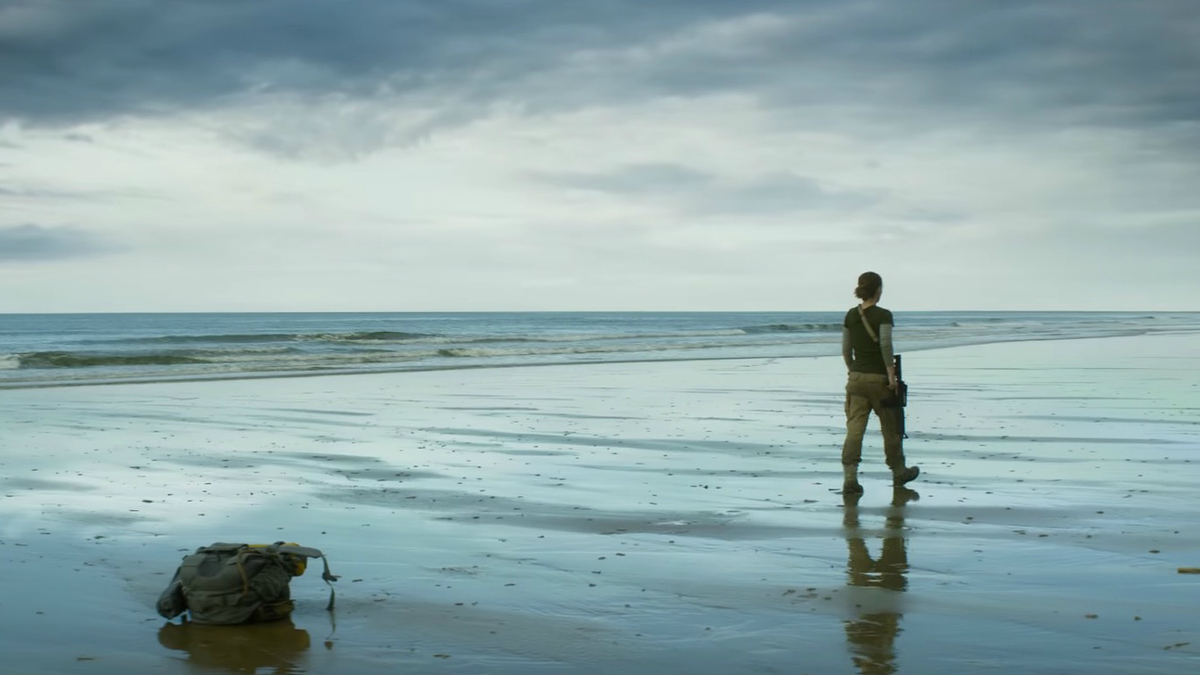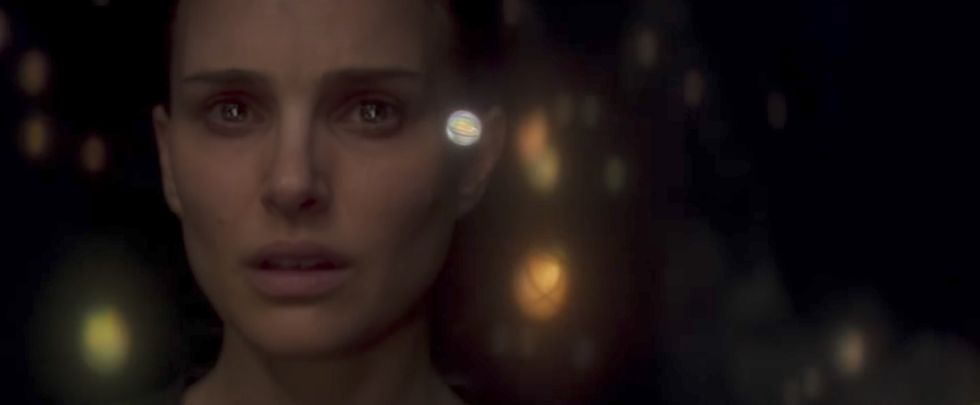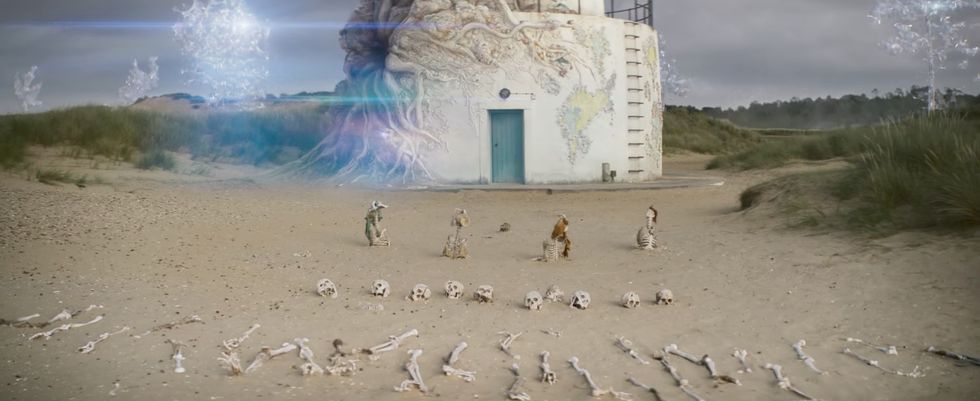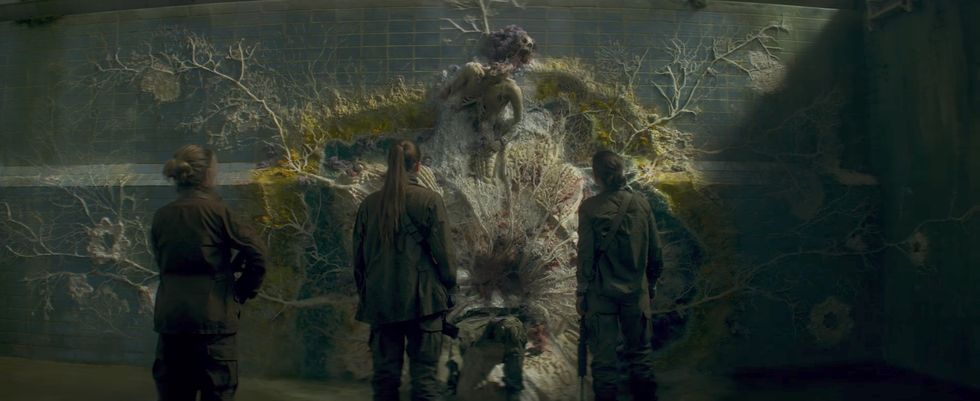"What on Earth did I just watch?" is probably an understandable reaction to Alex Garland's mind-bending sci-fi horror Annihilation (available to watch now on Netflix) – a film in which five women walk through a massive soap bubble to discover a strange, mutated environment that throws up all manner of bizarre creatures and plant life.
Having already upped the level of sophistication for modern science fiction with the critically acclaimed Ex_Machina, Garland has now created what will surely be one of the most intellectually challenging films of the year.
It is, in fact, such a brain teaser that it was deprived of a theatrical release in the UK after being deemed 'too intellectual' and then whacked on Netflix instead.
But in case the option of repeat viewings doesn't help your understanding of the film, we've put together this handy breakdown to try and make sense of it all.
MASSIVE SPOILERS TO FOLLOW
The plot
Loosely adapted from Jeff VanderMeer's supposedly unfilmable 2014 novel – the first of his Southern Reach Trilogy – the film's premise actually starts off relatively simple. Biologist soldier Lena (Natalie Portman) is mourning the disappearance of her military husband, Kane (Oscar Isaac), who has been missing in action for a year. Without any satisfying explanation, Kane suddenly returns home, but it's evident that something has changed him – he doesn't remember anything about his mission, he looks incredibly pale and promptly starts coughing up blood.
He's been inside the "Shimmer" – a mesmerising, dome-shaped membrane that is constantly expanding over a swampland region of southern Florida. Everything inside the bubble's walls is ominously classified as "Area X", as if to signify some form of of extra-terrestrial involvement. To find out what has happened to her husband and discover the cause of this strange phenomenon, Lena decides to enter the quarantined zone herself.
The strange discoveries inside the Shimmer
When Lena speaks to Kane for the first time since his disappearance, their hands are shown refracted through a glass of water, their fingers simultaneously intersecting and separating, making any distinction between them impossible. It's a shot that proves to be hugely significant when Lena later explores the inside of the Shimmer.
At first, Area X resembles a beautiful and seemingly peaceful, fluorescent forest. But then there is an attack by a massive albino alligator with shark teeth. It's a cross-species creature that simply shouldn't exist, much like the genetically-mutated plant life that infests the entire area – different types of flower grow from the same stem, which should be, as Lena quickly points out, impossible.
With the help of the four women accompanying her – Dr Ventress (Jennifer Jason Leigh), physicist Josie (Tessa Thompson), paramedic Anya (Gina Rodriguez) and geologist Cass (Tuva Novotny) – she soon learns that the DNA of every living thing inside Area X is being refracted, and combined in new ways, just like the glass of water.
All of the characters are experiencing some form of emotional pain
The female characters who enter the Shimmer with Lena are all going through their own personal trauma. Between them, there's a broken marriage, a dead child, a growing cancer and a battle with suicidal tendencies.
It seems like far too much of a coincidence that women experiencing such pain should be the ones to enter this nonsensical environment. From this, it's hard to ignore the idea that everything they're seeing inside the Shimmer is a symbolic manifestation of the troubles in their lives.
The lighthouse and that majestic dance sequence
Throughout the course of the film, the women's objective is to reach a lighthouse that was struck by a meteor. The Shimmer originated from this point, which leads them – or at least Lena and Dr Ventress – to believe that it may hold some answers.
When Lena finally enters the tower, she learns that the original form of her husband killed himself with a phosphorus grenade, and was replaced with an alien clone of himself.
Lena then discovers the location of the meteor and finds a sort of cell-generating sac that pinches a bit of her DNA and replicates her entire physical form.
Her clone, which starts out as a metallic mannequin, mirrors her every move. She goes to punch it and it punches her right back. She runs to escape and it runs right with her, pinning her against the door with the weight of her own actions. She's only able to end this hellish mime act by coming to terms with this shadow version of herself – and then destroying it.
It's by this point, at the very end of the film, that Annihilation begins to look like a profound parable of self-reflection – an internal journey that explores human nature's flawed desire to constantly expand into the unknown, when really we should be looking inwards.
The ending and how it differs to the source material
Lena burns down the lighthouse, which appears to eradicate the effects of Area X. When she returns to the clone copy of her husband it's implied that she, too, is no longer the same person. From a literal point of view, her cells have been mutated, and symbolically, the person she thought she was has been completely annihilated. We then see a Shimmer flicker in her eye, indicating that she will never be the same again (and possibly that it was even the clone version who returned from Area X and not the original Lena, though that's ambiguous).
It's this ending that is the biggest difference between VanderMeer's novel and the film. Garland's Annihilation is a standalone story that doesn't lead into the other two books in the Southern Reach Trilogy. It's conclusively tied up in such a manner that it alters the meaning of the title. And, given how this film's existential exploration will now be compared to the likes of 2001: A Space Odyssey, it's a move that paid off tremendously.
Annihilation is available on Netflix now.
Want up-to-the-minute entertainment news and features? Just hit 'Like' on our Digital Spy Facebook page and 'Follow' on our @digitalspy Twitter account and you're all set.
















